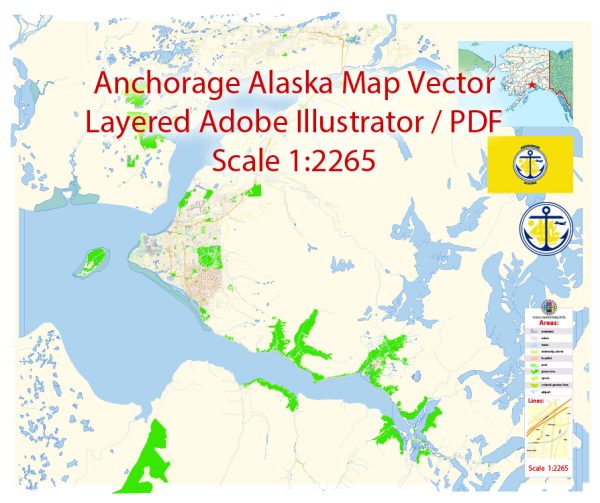The history of urban development in Anchorage, Alaska, is a unique and fascinating story that reflects the city’s evolution from a small tent city to a thriving metropolis. Here’s a brief description of the key stages and developments in Anchorage’s urban history:
- Early Settlement and Tent City (1910s): Anchorage’s urban history begins with its establishment as a construction camp for the Alaska Railroad in 1915. The city’s roots can be traced back to this period when it was essentially a tent city housing railroad workers and military personnel during World War I. Anchorage’s strategic location as a transportation hub began to take shape.
- Post-World War II Growth (1940s-1950s): The end of World War II marked a significant turning point for Anchorage’s urban development. The city experienced rapid growth due to the construction of military bases, an increase in population, and improved transportation infrastructure. It also became the transportation center for Alaska, with the completion of the Alaska Highway and the construction of Elmendorf Air Force Base and Fort Richardson.
- Statehood and Economic Expansion (1960s-1970s): Alaska achieved statehood in 1959, which brought about a new era of growth and development for Anchorage. The discovery of oil in Prudhoe Bay in the late 1960s and the subsequent construction of the Trans-Alaska Pipeline system in the 1970s led to an economic boom. This period saw the development of modern infrastructure, including the expansion of the port, airport, and downtown Anchorage.
- Earthquake and Rebuilding (1964): The 1964 Good Friday Earthquake, one of the most powerful in recorded history, had a devastating impact on Anchorage’s urban landscape. The earthquake caused significant damage to buildings, roads, and infrastructure. The subsequent reconstruction efforts contributed to a more modern and earthquake-resistant city.
- Downtown Development and Modernization (1980s-Present): In the late 20th century and continuing into the 21st century, Anchorage saw significant downtown development and modernization. The city invested in cultural and civic facilities, including the Anchorage Museum at Rasmuson Center and the Alaska Center for the Performing Arts. The development of the Alaska Railroad Terminal and the Port of Anchorage also boosted economic activity and transportation infrastructure.
- Challenges and Sustainability (Ongoing): Anchorage faces ongoing challenges related to its urban development, including issues like housing affordability, traffic congestion, and urban sprawl. The city is actively working on sustainability initiatives and improving public transportation to address these concerns.
- Cultural and Community Growth: Anchorage is not just about its urban development; it’s also a diverse and culturally rich city. The community celebrates its Native Alaskan heritage, hosts a variety of festivals and events, and provides recreational opportunities through its proximity to the Alaskan wilderness.
Anchorage’s urban development history is marked by its unique blend of frontier spirit, military influence, economic growth, and its continued commitment to environmental sustainability. The city has come a long way from its humble tent city beginnings to become the largest city in Alaska and a vital economic and cultural center in the state.


 Author: Kirill Shrayber, Ph.D.
Author: Kirill Shrayber, Ph.D.